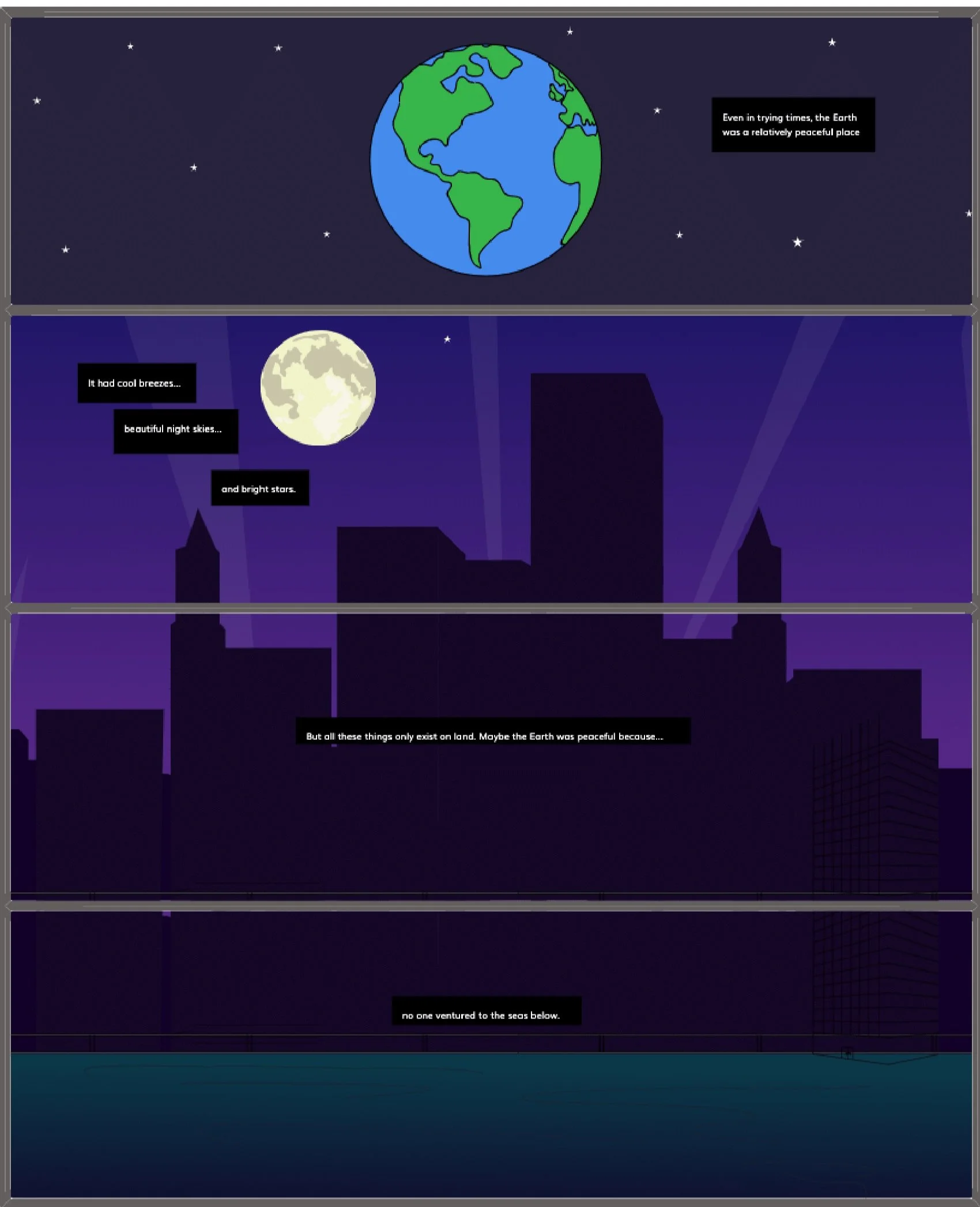Comic Panels: Everything You Need to Know
Comic panels are an essential element of the comic book page, providing both structure and style to the story. When used effectively, multiple panels can create a rhythm and pace that enhances the reading experience, and can also be used to highlight key scenes and moments.
When designing your own comic book pages, it’s important to keep in mind the different types of panels available to you and to experiment with different panel layouts to see what works best for your story.
The Different Types of Comic Book Panels
Overlapping Panels: An overlapping panel is when one image is slightly visible in the next panel.
Strict (regular): A strict or regular panel is a rectangular or square image that doesn’t overlap with the other panels.
Irregular panel: An irregular panel is where one or more of the sides are not straight or parallel, creating a row or column on panels with differently sized panels, often used to show movement or to make a particular image stand out.
Diagonal: A diagonal panel is where the panel is set at an angle, often used for the same purpose as an irregular panel.
Puzzle or jigsaw: A puzzle or jigsaw panel is where the image is broken into pieces, often used for action scenes.
Splash: A splash panel is a full-page panel, usually used for a dramatic entrance or exit.
Horizontal Panel: A horizontal panel is a long and rectangular, often used to show a landscape.
Vertical Panel: A vertical panel is a tall and skinny rectangle, often used to show simultaneous events like several character reactions side by side.
Inset Panel: An inset panel is when one panel is within a larger panel.
Broken Panel: A broken panel is when an image within a panel extends beyond the border into the gutter or adjacent panel
Page panel: A page-sized panel, takes the place of the page itself, while all of the other panels are superimposed over it.
Full-width Panel: A panel that takes up the entire width of the page
You can mix and match these different types of comic book panels to create a unique comic book page. There is no one correct way to do it – the best thing to do is an experiment and see what works best for you and your story.
How to Use Comic Book Panels to Create a Story
The first thing you need to know about comic book panels is that they are a storytelling device. They provide the reader with a visual representation of the action taking place in the story. Each panel should advance the story forward and provide new information to the reader.
One of the most important things to remember when creating a comic book is that the panels should flow together seamlessly. This can be achieved by using a variety of panel layouts and sizes. You want to avoid using too many panels that are the same size and shape as this can make the story feel static.
When creating your panels, you also want to take into consideration the amount of text you include in each one. Too much text can be overwhelming for the reader and make it difficult to follow the story. On the other hand, not enough text can make the panel feel empty. Finding the right balance is essential to creating an effective comic book panel.
Once you have the basics down, you can start to experiment with different panel layouts and sizes to see what works best for your story. There are no hard and fast rules when it comes to comic book panels so don't be afraid to experiment until you find a layout that you're happy with.
The Benefits of Using a Comic Panel
Comic book panels offer a number of benefits that can help you create a better story.
They provide the reader with a visual representation of the action taking place in the story.
They can help to break up the text and make the story easier to follow.
They allow you to experiment with different panel layouts and sizes to find what works best for your story.
The Different Ways to Panel a Comic Page
There are a number of different ways you can panel a comic book. The most common are:
Grid Layout: The most common way is to use a grid layout. This involves dividing the page into a series of equal-sized panels.
Staggered Layout: Another popular method is to use a staggered layout. This means that the panels are not all the same size. This can be used to create a sense of movement or to focus the reader's attention on a particular panel.
Non-Linear Layout: A third option is to use a non-linear layout. This means that the panels are not arranged in a traditional grid or staggered pattern. This can be used to create a more dynamic and visually interesting story.
How to Choose the Right Comic Book Panels for Your Story
The type of panels you use should be based on the story you're trying to tell. If your story is fast-paced, you may want to use a more dynamic panel layout. If your story is more character-driven, you may want to use a more static layout.
It's also important to consider the genre of your story when choosing your panels. A horror story, for example, may benefit from using different panel sizes and shapes to create a sense of suspense.
Ultimately, the best way to choose the right comic book panels for your story is to experiment and see what works best. There are no hard and fast rules so don't be afraid to try something new.
Conclusion
Now that you know everything you need to know about comic book panels, you're ready to start creating your own stories. Experiment with different panel layouts and sizes to find what works best for you. And don't be afraid to try something new. The possibilities are endless.
Start creating your own comics today and see where your imagination takes you!
Hi, Welcome to Storyspread.com!
Comic creation made simple. Create graphic novels with a single click. Add character, backgrounds, and more.
Easy to use. Say goodbye to searching far & wide for an expensive illustrator.
Tell your story. Join other creatives, readers, and hobbyist in producing high quality & beautiful comics
Read. Read other’s comics for FREE and share with others
Grow. Grow an audience you love with the stories YOU imagined
Were you can create a comic and graphic novel WITHOUT drawing. Simple and easy! Made for all skill levels. Click-n-drag comic book characters, scences into panels.
Create a comic just like this! Here.



